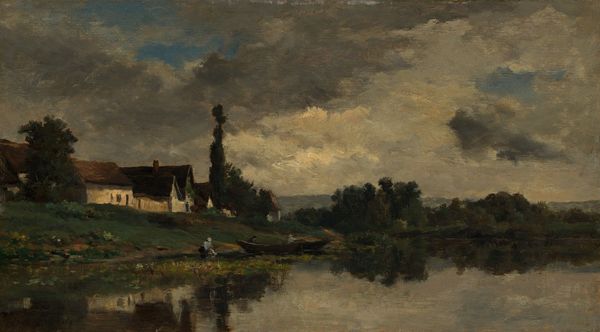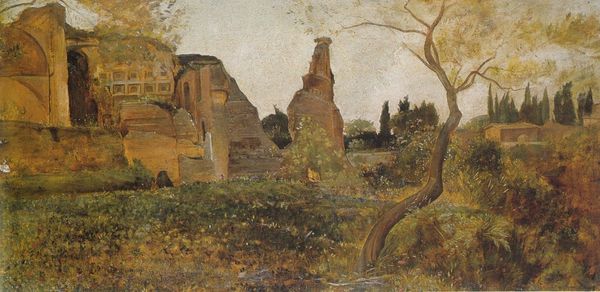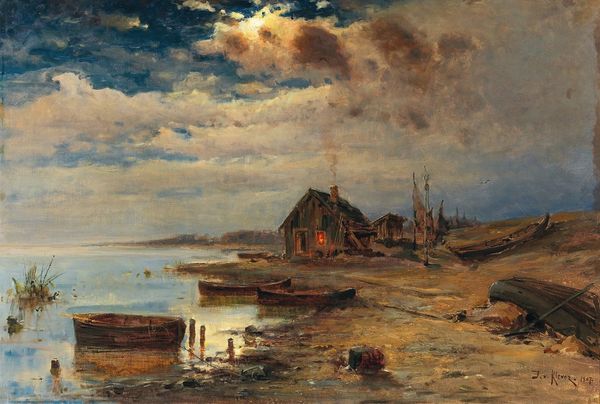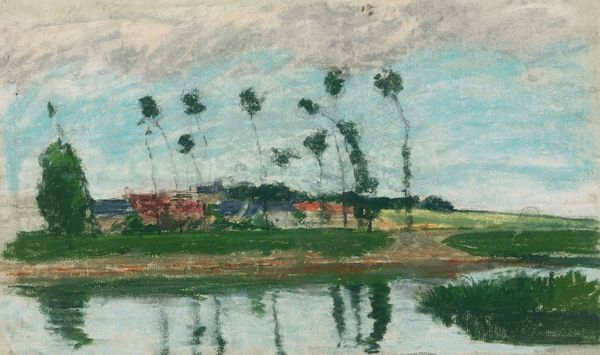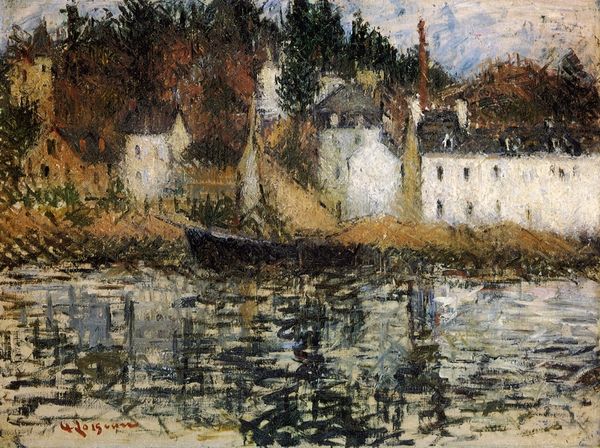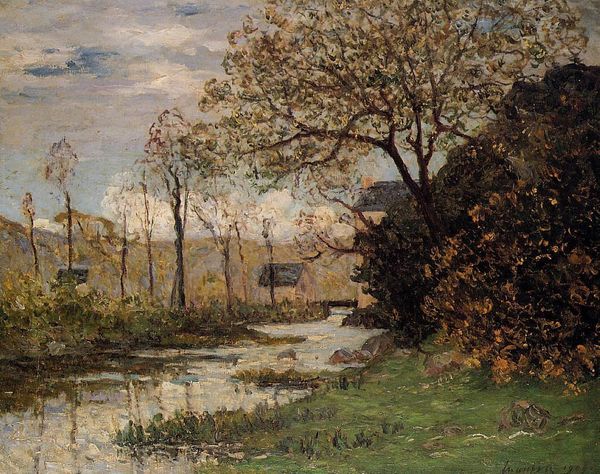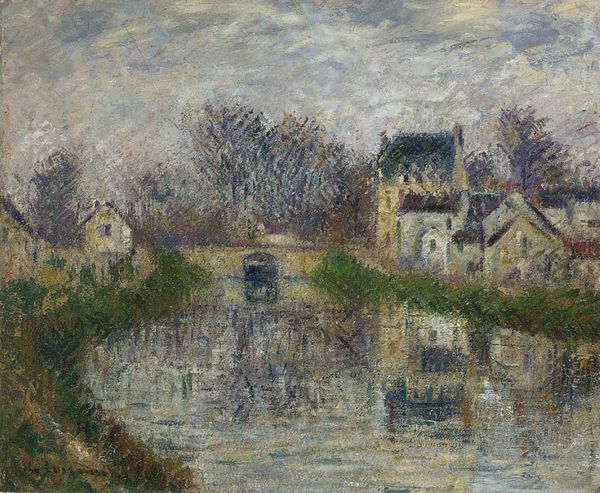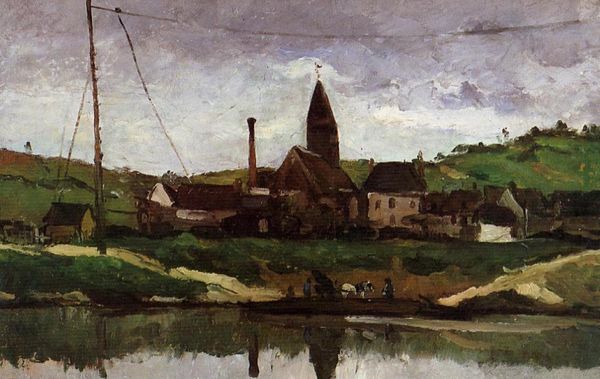
painting, oil-paint, architecture
#
painting
#
impressionism
#
oil-paint
#
landscape
#
oil painting
#
cityscape
#
architecture
Copyright: Public domain
Eugène Boudin, a 19th-century artist, painted ‘Criqueboeuf, the Church’ with oil paints. The way Boudin handled his materials, focusing on the effects of light and atmosphere, was part of a broader artistic turn towards modernism. In this evocative waterscape, Boudin’s brushstrokes capture a sense of the immediacy, giving the painting a fluid, almost dreamlike quality. Note how the texture varies, from the impasto of the church walls to the smooth reflections in the water. The paint itself becomes a means of conveying not just the appearance of the scene, but also its sensory impact. Boudin was part of a generation of artists fascinated by the changing face of France, with its burgeoning industry, railways, and tourism. He was interested in the immediacy of everyday life, and how that could be captured in the materiality of paint. ‘Criqueboeuf, the Church’ invites us to consider how such painterly approaches can expand the boundaries of art, challenging distinctions between high art and everyday experience.
Comments
No comments
Be the first to comment and join the conversation on the ultimate creative platform.
